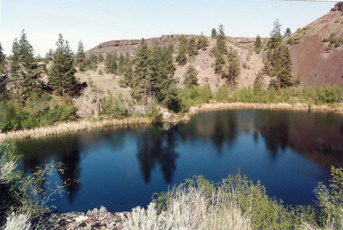Northrup Canyon State Park

The Site
Northrup Canyon is usually a surprise for the first-time visitor. Each turn in the old road-bed access trail offers a new habitat type, as one moves into the steep-walled valley. Just off the highway, and looking out of place amid all the basalt, is a huge granite monolith relic. Apparently it was too solid and massive to yield to the geologically recent Lake Missoula Floods that scoured out the extensive basalt canyon. Dramatic panoramas of the steep cliffs are more typical of the rest of the immediate area. Next comes a shady stretch of Ponderosa pine and Douglas fir, growing out of the talus. While gradually gaining elevation, you soon encounter an extensive meadow. Within view is an old homestead, beyond which lies Northrup Lake. Spring-fed Northrup Creek winds its way back down through the lower half of the canyon. While it can be difficult to navigate along its entire length back out to the highway, it is prime riparian habitat.
The Birds
Up to 100 communal roosting Bald Eagles have been counted here during the winter months. Year-round residents have included Brown Creeper, Red-breasted Nuthatch, Bewick's and Canyon Wrens, Wild Turkey, Ringed-neck Pheasant, Black-capped and Mountain Chickadees, and Downy Woodpecker. Great Horned and Long-eared Owls are reported here. Say's Phoebes and Lazuli Buntings, Western Wood-Pewees summer in the canyon.
Directions and Suggestions
From Route 2 northeast of Coulee City, take Route 155 north along Banks Lake to mile 18.9. Turn right to a new pay-to-park area established above the turn-off from the highway. Approaching from Grand Coulee, turn south from Route 174 and proceed to the same mile-marker, about seven miles' distance.
The canyon is prime rattlesnake habitat, so caution is advised. An interesting side trail traverses the east canyon wall following the old Almira-Bridgeport wagon road. Northern Saw-whet and Northern Pygmy-Owls frequent the larger firs along this route. This trail is closed during the November-to-March Bald Eagle winter roosting cycle. A Bald Eagle Festival is held in mid-February.
There are no facilities.
